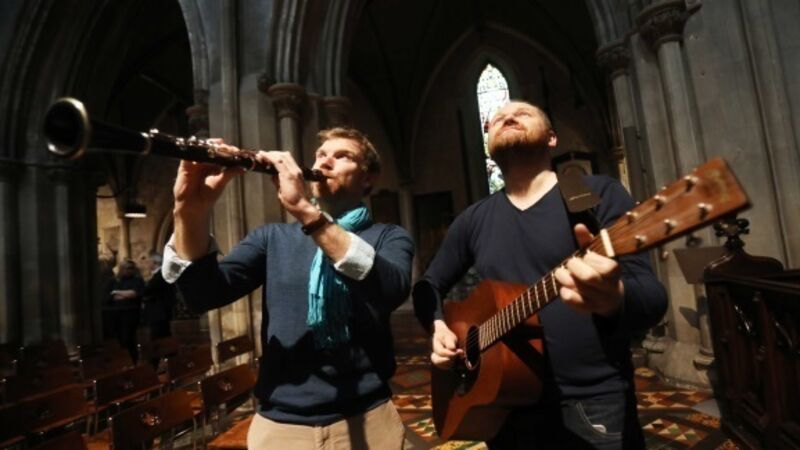'Jazz saxophone player who doesn’t play saxophone or jazz' finds his calling

“Woodwind instrumentalist, composer, and music producer” is how Seán Mac Erlaine is described on his official website. That doesn’t shed much light. Nor, to be blunt, does the Dubliner’s (admittedly playful) assertion that he is a “jazz saxophone player who doesn’t play saxophone or jazz”.
Words don’t really do justice to his intricate and often mesmerising soundscapes, which indeed tap the intellectual adventurousness of jazz but also dangle a toe in the modern classical “contemporary music” scene and — to overreach slightly — the avant-garde end of the 1990s post-rock movement.
“It’s hard for us to put names on things,” says Mac Erlaine, ahead of the release of third solo album Music For Empty Ears, to be debuted with concerts at Project Arts Centre Dublin (tomorrow) and Triskel Christchurch, Cork (Saturday).
“Contemporary music doesn’t signify anything. People don’t worry too much about the genre thing — that mostly relates to journalists and marketing departments. When you sit down to listen to music you don’t go, ‘oh that sounds like blues’ — you take it for what it is.”
Twenty years ago, Mac Erlaine’s slipstream oeuvre might have languished in obscurity. Today, thanks to Spotify and the availability of music on tap, audiences are more open to being challenged. That said, there’s also the downside that, with music everywhere, the public is more inclined to take it for granted.
“I’m of the generation that remembers the before and after [the internet],” says the musician, whose collaborators include the Gloaming, Icelandic composer Valgeir Sigursson, and one-time Can vocalist Damo Suzuki.
“Growing up, you’d get a cassette or CD and listen to it over and over. You’d really absorb it. Then the whole explosion happened and we were able to listen all over the place. There was possibly something to that restriction, of having just one album. Now you can listen to everything all at once.”
Music for Empty Ears was recorded in Norway with guitarist Eivind Aarset and groundbreaking live sampler Jan Bang. Described by his record label as a “breathtaking” marriage of “richly textured woodwind” and an “expanded palette”, the project speaks to Mac Erlaine’s singular approach to recording.
He spent months preparing the material, then laid down the album in two days in Oslo, with much of the performance improvised. After that, it was back to the studio for the arduous task of editing and reconfiguring.
“There are a lot of different ways of defining or putting limits on what improvisation is,” he says when it is suggested that, in the public imagination, “improvisation” is synonymous with waywardness or indulgence.
“There is the idea of free improvisation — where you literally don’t know what is going to happen next. There will be three of us on stage and we just start playing.
“The easier way to explain it is to talk about a conversation. Two people have a conversation — they don’t know what they are going to say next. If you sit down with a friend across a table and start talking, that’s improvisation.
"That runs through to the idea of music being a language. It is how I can go to a country where I don’t speak the language and we create something that makes sense to the three of us and hopefully to the listener.”
Mac Erlaine’s journey into experimental music came via an early infatuation with Bob Dylan and a stint on the shaggy-jumpered Dublin songwriter circuit of the early 2000s.
But he was more than just another anguished strummer, with, among other qualifications, a PhD in music and a diploma in jazz performance awarded by the Guildhall School of Music, London.
“Initially I was a singer-songwriter. I was obsessed with Dylan. I came from that place, the DIY, figure-it-out yourself thing. However, I was also educated as a jazz musician, which is when I started playing saxophone. I have a background in both and ultimately wanted to find my own way.”










